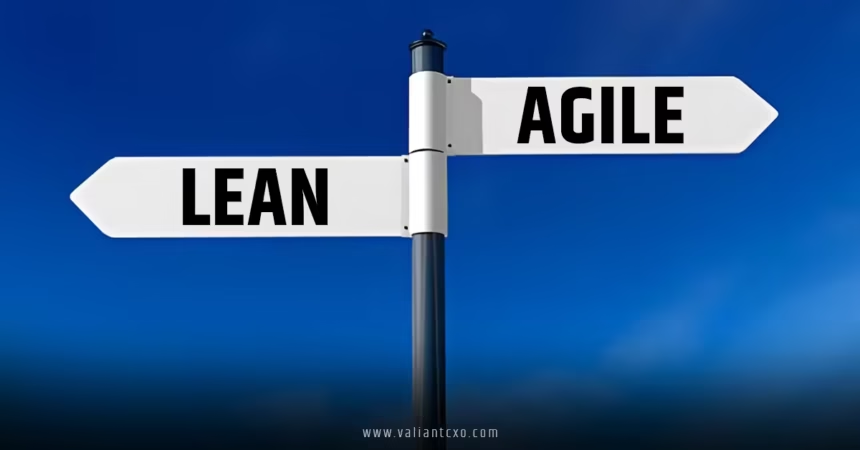Lean & Agile Operations are like the dynamic duo of modern business efficiency, working hand in hand to help organizations thrive in a world that never slows down. Imagine your company as a sleek race car: Lean trims the excess weight to make you faster, while Agile ensures you can navigate sharp turns with precision. Together, they create a framework that boosts productivity, cuts waste, and keeps customers happy. In this article, we’ll dive deep into what Lean & Agile Operations mean, why they matter, and how you can harness them to supercharge your business. Ready to rev up your operations? Let’s go!
What Are Lean & Agile Operations?
At their core, Lean & Agile Operations are about delivering value efficiently and adapting to change swiftly. Lean focuses on eliminating waste—think unnecessary steps, excess inventory, or idle time—while Agile emphasizes flexibility, collaboration, and rapid delivery. When combined, these philosophies create a powerhouse approach to operations that’s both streamlined and adaptable.
The Lean Philosophy: Less Is More
Lean comes from the manufacturing world, specifically Toyota’s production system in the 1940s. It’s all about doing more with less. Picture a chef in a bustling kitchen: every ingredient, tool, and motion has a purpose. If they’re chopping veggies they don’t need, that’s waste. Lean operations identify and cut these inefficiencies, ensuring every step adds value to the customer.
Key principles of Lean include:
- Value Identification: Understand what customers truly want.
- Waste Elimination: Remove anything that doesn’t contribute to that value.
- Continuous Improvement: Always look for ways to do better.
The Agile Mindset: Adapt and Thrive
Agile, born in software development, is like a surfer riding unpredictable waves. It prioritizes flexibility, quick iterations, and customer feedback. Instead of planning a year-long project and hoping it works, Agile breaks work into smaller chunks, delivering usable results fast and adjusting based on real-world input.
Agile’s core values include:
- Collaboration: Teams and customers work closely together.
- Iterative Progress: Deliver small, functional pieces frequently.
- Adaptability: Pivot when priorities or conditions shift.
When you blend these, Lean & Agile Operations become a strategy for delivering high-quality results quickly while staying nimble enough to handle surprises.
Why Lean & Agile Operations Matter in Today’s World
Ever wonder why some companies seem to outpace others, even in tough markets? Lean & Agile Operations are often the secret sauce. In a world where customer expectations shift daily and competition is fierce, businesses can’t afford to be sluggish or wasteful. These approaches help you stay lean enough to save resources and agile enough to pivot when the market throws a curveball.
For example, a retail company using Lean & Agile Operations might streamline its supply chain to reduce excess inventory (Lean) while rapidly adjusting product offerings based on trending customer preferences (Agile). The result? Lower costs, happier customers, and a competitive edge.
Benefits of Lean & Agile Operations
Adopting Lean & Agile Operations isn’t just a buzzword—it delivers real results. Here’s why:
- Cost Savings: Lean cuts waste, saving money on materials, time, and labor.
- Faster Delivery: Agile’s iterative approach gets products or services to market quicker.
- Customer Satisfaction: Both methods prioritize customer value, leading to better experiences.
- Resilience: Agile’s adaptability helps businesses weather disruptions like supply chain issues or economic shifts.
- Team Empowerment: Collaborative Agile processes and Lean’s focus on improvement boost employee morale and innovation.
How to Implement Lean & Agile Operations in Your Business
Ready to bring Lean & Agile Operations to your organization? It’s not about flipping a switch—it’s a journey. Think of it like renovating a house: you need a plan, the right tools, and a willingness to adapt as you go. Here’s how to get started.
Step 1: Assess Your Current Operations
Before you can streamline, you need to know where you stand. Conduct a thorough review of your processes. Where are you wasting time or resources? Are there bottlenecks slowing you down? For example, a software company might find that lengthy approval processes delay releases—Lean & Agile Operations can help by cutting unnecessary steps and prioritizing iterative development.
Step 2: Engage Your Team
Lean & Agile Operations thrive on collaboration. Get your team on board by explaining the benefits and involving them in decision-making. Agile’s emphasis on teamwork means everyone’s voice matters, from developers to marketers. Try workshops or training sessions to introduce concepts like Kanban boards or value stream mapping.
Step 3: Start Small with Pilot Projects
Don’t overhaul everything at once. Pick a single process or project to apply Lean & Agile Operations. For instance, a manufacturing firm might streamline one production line using Lean principles while testing Agile sprints for a new product launch. Measure results, gather feedback, and scale up.
Step 4: Use the Right Tools
Tools can make or break your Lean & Agile Operations. For Lean, consider value stream mapping software to visualize workflows. For Agile, tools like Trello or Jira help manage sprints and track progress. These platforms keep teams aligned and processes transparent.
Step 5: Measure and Improve
Lean & Agile Operations are all about continuous improvement. Use metrics like cycle time, customer satisfaction, or defect rates to gauge success. Regularly review what’s working and what’s not, tweaking your approach as needed. It’s like tuning a guitar—small adjustments lead to harmony.
Overcoming Challenges in Lean & Agile Operations
No transformation is without hurdles. Adopting Lean & Agile Operations can face resistance, especially in traditional organizations. Employees might fear change, or leadership might hesitate to rethink established processes. Here’s how to tackle common challenges.
Resistance to Change
People love their comfort zones. To ease fears, communicate the “why” behind Lean & Agile Operations. Show how these methods lead to less stress, better results, and happier customers. Involve skeptics in pilot projects to win them over with tangible wins.
Balancing Lean and Agile
Lean’s focus on efficiency can sometimes clash with Agile’s flexibility. For example, cutting too many resources might limit your ability to pivot. Strike a balance by prioritizing customer value. Regularly check in with stakeholders to ensure you’re lean without losing agility.
Scaling Across Teams
What works for one team might not work for ten. Scaling Lean & Agile Operations requires clear communication and standardized processes. Frameworks like SAFe (Scaled Agile Framework) can help align multiple teams while keeping the spirit of Lean and Agile intact.
Real-World Examples of Lean & Agile Operations
Let’s make this real. Companies across industries have transformed with Lean & Agile Operations. Take Toyota, the Lean pioneer. By focusing on just-in-time production, they slashed inventory costs while maintaining quality. Or look at Spotify, which uses Agile squads to roll out new features weekly, keeping users hooked with constant updates.
Even small businesses can benefit. A local bakery might use Lean to reduce wasted ingredients and Agile to quickly test new recipes based on customer feedback. The result? Fresher goods, lower costs, and a loyal customer base.
The Future of Lean & Agile Operations
Where are Lean & Agile Operations headed? As technology evolves, so do these methodologies. Automation and AI are supercharging Lean by identifying inefficiencies faster than ever. Meanwhile, Agile is adapting to remote work, with tools enabling global teams to collaborate seamlessly.
Sustainability is also becoming a focus. Lean & Agile Operations can help companies reduce environmental waste while staying responsive to eco-conscious consumers. Imagine a world where businesses are not only efficient but also planet-friendly—that’s the power of these approaches.
Conclusion
Lean & Agile Operations are more than buzzwords—they’re a roadmap to thriving in a fast-moving world. By cutting waste and embracing flexibility, businesses can deliver value faster, keep customers happy, and stay ahead of the competition. Whether you’re a startup or a global giant, these principles offer a path to efficiency and resilience. So, why wait? Start small, engage your team, and let Lean & Agile Operations transform the way you work. The race is on—time to hit the gas!
FAQs About Lean & Agile Operations
1. What’s the main difference between Lean and Agile in operations?
Lean focuses on eliminating waste to maximize efficiency, while Agile emphasizes flexibility and rapid delivery. Together, Lean & Agile Operations create a balanced approach to streamline processes and adapt to change.
2. Can small businesses benefit from Lean & Agile Operations?
Absolutely! Small businesses can use Lean & Agile Operations to cut costs, improve customer satisfaction, and respond quickly to market shifts, making them just as competitive as larger firms.
3. What tools are best for implementing Lean & Agile Operations?
Tools like Trello, Jira, or Asana support Agile project management, while value stream mapping software helps with Lean. Choose tools that fit your team’s needs and promote transparency.
4. How long does it take to see results from Lean & Agile Operations?
Results vary, but pilot projects can show improvements in weeks. Full transformation may take months, depending on your organization’s size and commitment to continuous improvement.
5. Are Lean & Agile Operations only for tech or manufacturing?
Not at all! From healthcare to retail to education, any industry can apply Lean & Agile Operations to improve efficiency, customer focus, and adaptability.
Similar Articles:valiantcxo.com


